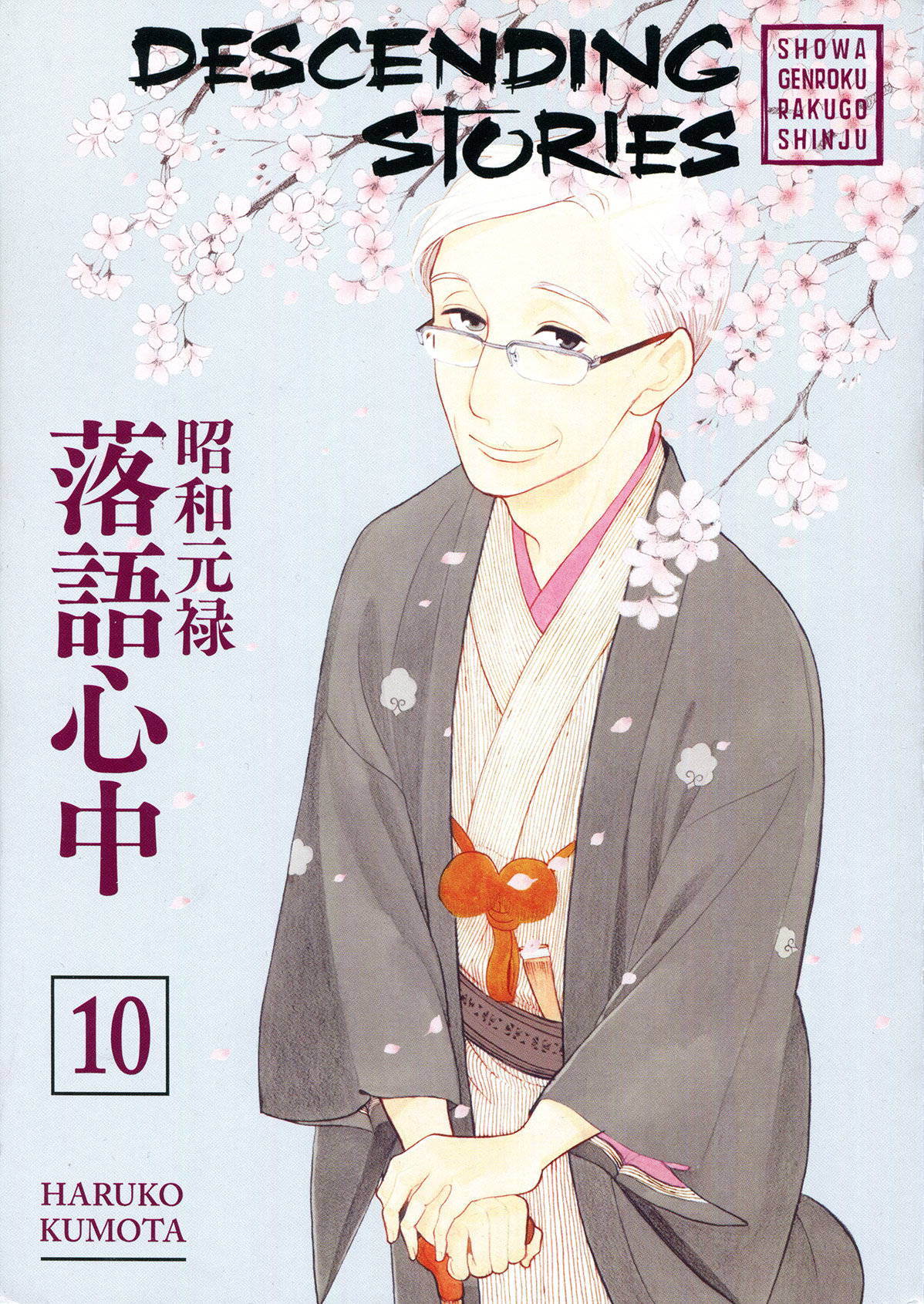
Implicit Storytelling – The Excellence of Descending Stories
Descending Stories – Showa Genroku Rakugo Shinju (~Showa and Genroku Era Lover’s Suicide through Rakugo) is a work of fiction by Kumota Haruko that is originally released as a 31 chapters long manga series (2010-2016) and then adapted into two seasons of anime (2016-2017). It’s a very complex story, one that has had me thinking more about its meaning and content than almost any other before. There are many reasons for that, the main being that both its theme and the storytelling itself resonated with me, and affected me deeply.
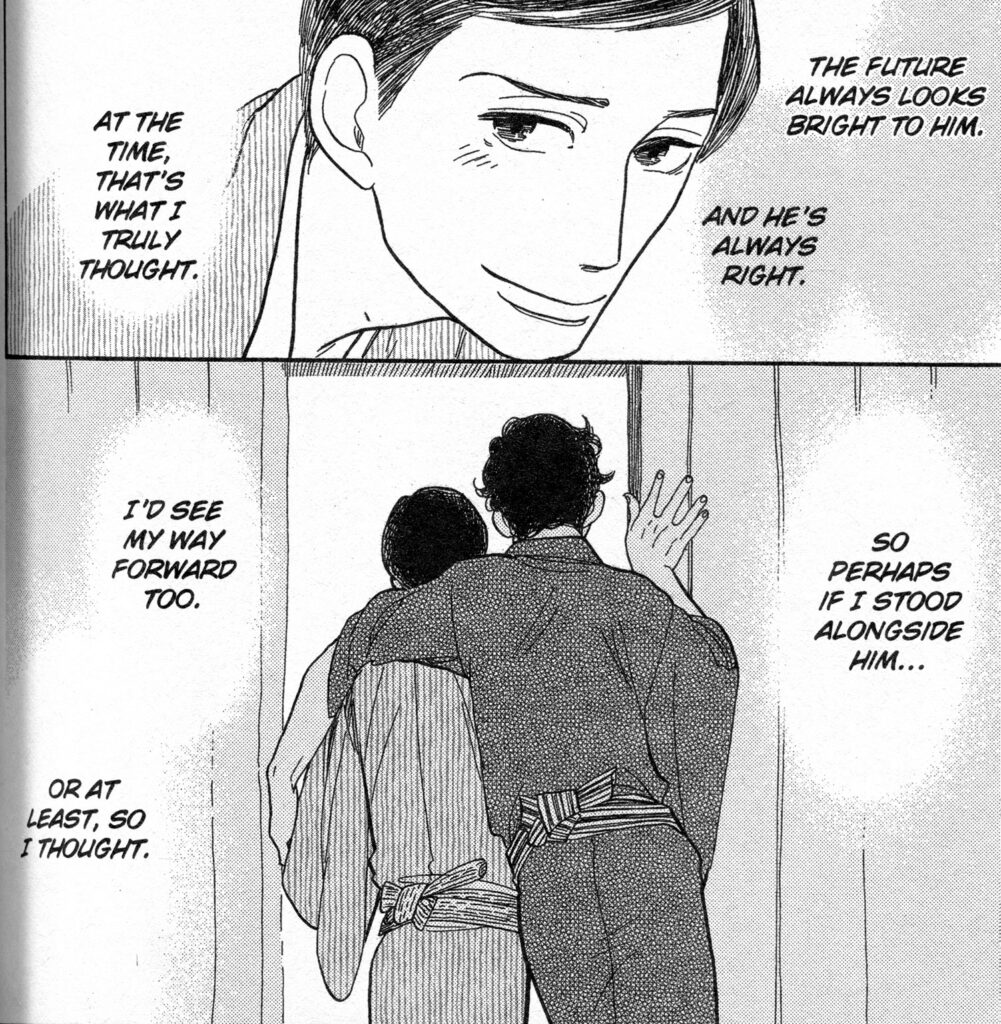
My writing will revolve around the main themes and my thoughts about those, then I’ll delve deeper into the story’s love triangle, and the sub-text and implicit storytelling surrounding it. I will also write a little on how this form of storytelling resembles interactive storytelling.
I will analyze the story in its entirety, so there will be spoilers. Though I will try to warn about them in advance, especially those that might affect the experience, the best thing would be if you had already taken part of the story when reading this.
I’ll call the work Descending Stories throughout, regardless of whether I’m speaking about the manga or the anime. There are some scenes added in the anime, as well as some taken away, otherwise the story is very similar in both mediums. But there has of course been interpretations made, for example by the team working on adapting the manga to anime, as well as by those who have translated the works into English. There might also be cultural context that I’m missing, or that I’m not fully understanding, affecting my reading of the story.
Rakugo
First, we need to know a little about rakugo. Rakugo is a japanese form of comedic storytelling performed by a lone artist: kneeling on stage, using only a fan and a special handkerchief as props. An important part of the storytelling is playing and narrating different characters. Rakugo is known to have existed as an oral tradition since the 9th/10th century, practised first by buddhist monks. It became a more common form of entertainment during the Edo period (1603–1867). The rakugo stories have been passed on from master to apprentice through centuries.
The Story
[Spoilers ahead] There are three main arcs in the story, in the manga they are named Yotaro’s Odyssey, Yakumo and Sukeroku and Sukeroku again. Yotaro’s Odyssey starts when a very straight-forward young man begs the rakugo master Yakumo the 8th to let him become his rakugo apprentice. On a whim, Yakumo takes him in and swiftly names him Yotaro (~fool).
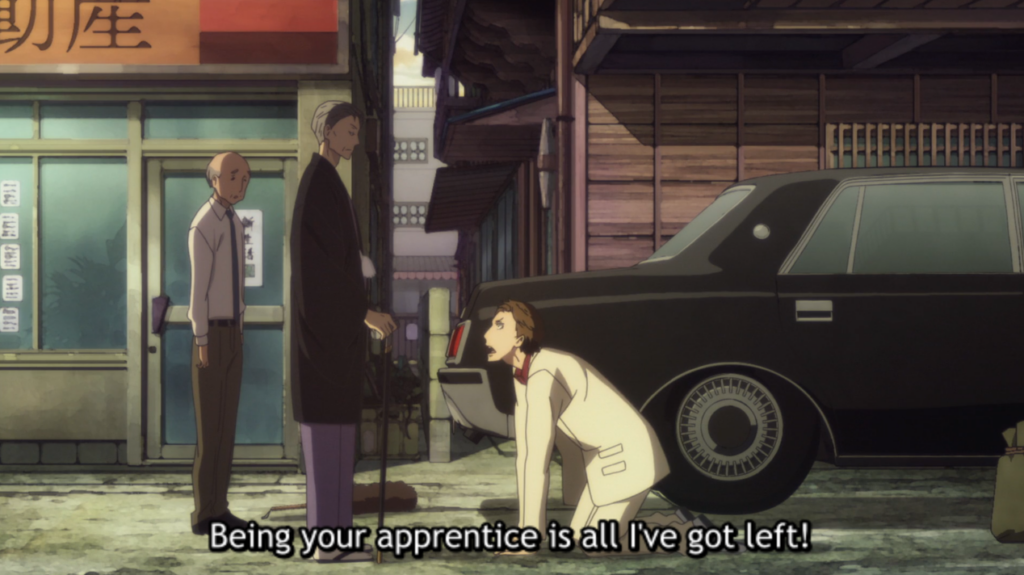
Yotaro’s got some resemblance to Yakumo’s very close friend and co-apprentice Sukeroku, who’s now dead.
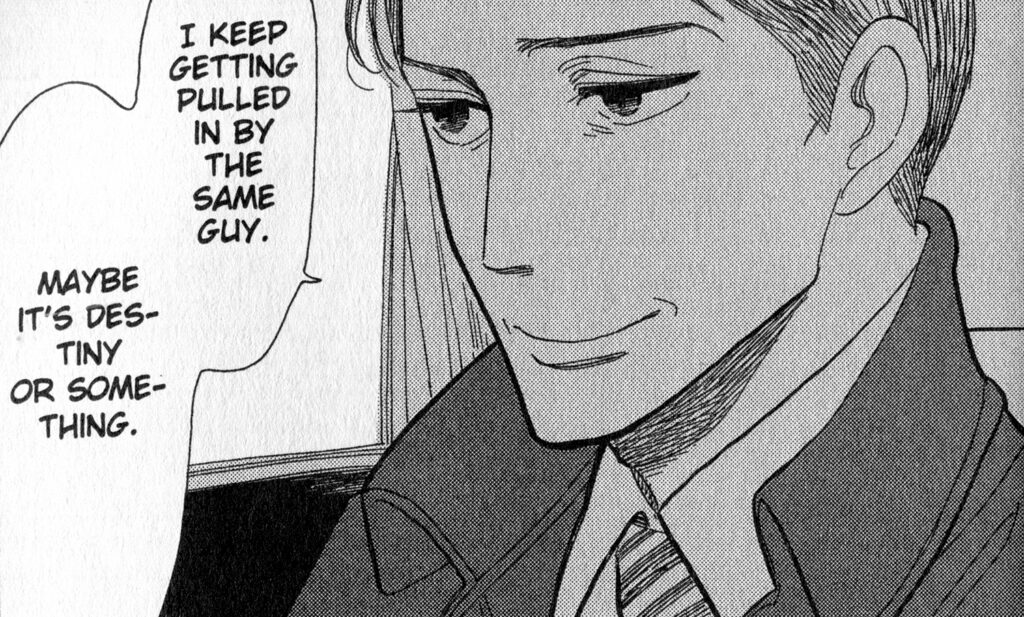
In Yakumo’s care is also Konatsu, Sukeroku’s daughter, who has been living with him since she was five years old, when her parents passed away in a devastating accident. Their relationship is affected by the fact that Konatsu partly blames Yakumo for the death of her parents. As Yotaro joins their household and becomes a Zenza (the lowest rank of rakugo artist), Yakumo starts telling the story of what led up to the couple’s deaths.
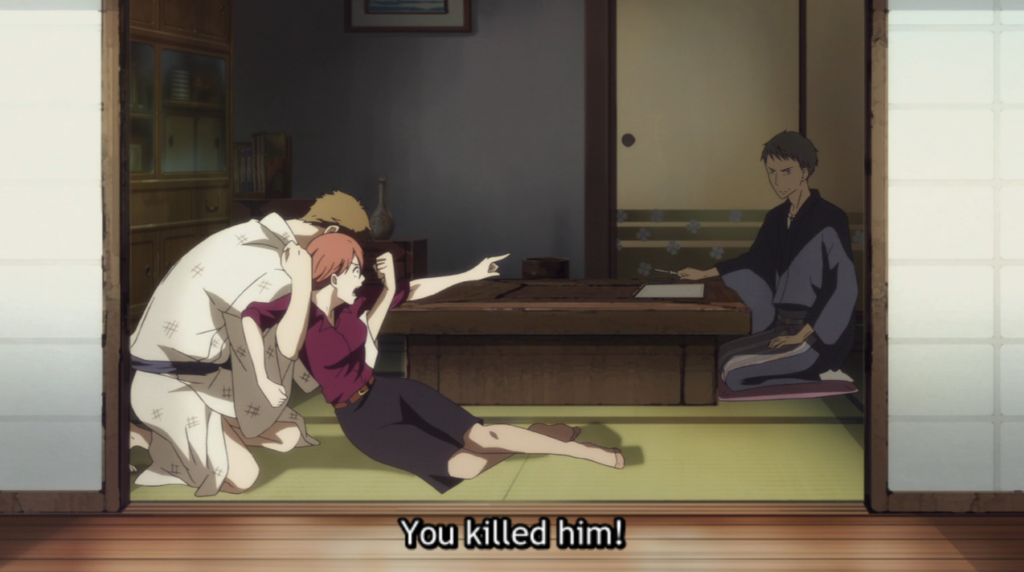
Yakumo and Sukeroku is Yakumo’s own story, told to Yotaro and Konatsu from his memory . The story starts when Yakumo – then called Bon (~kid) – is left in Yakumo the 7th’s care, to become his apprentice. At the same time the child Shin – later Sukeroku – is taken in as well. As they’re both abandoned by their parents, they develop a close relationship, although they’re as different from each other as two people can be.
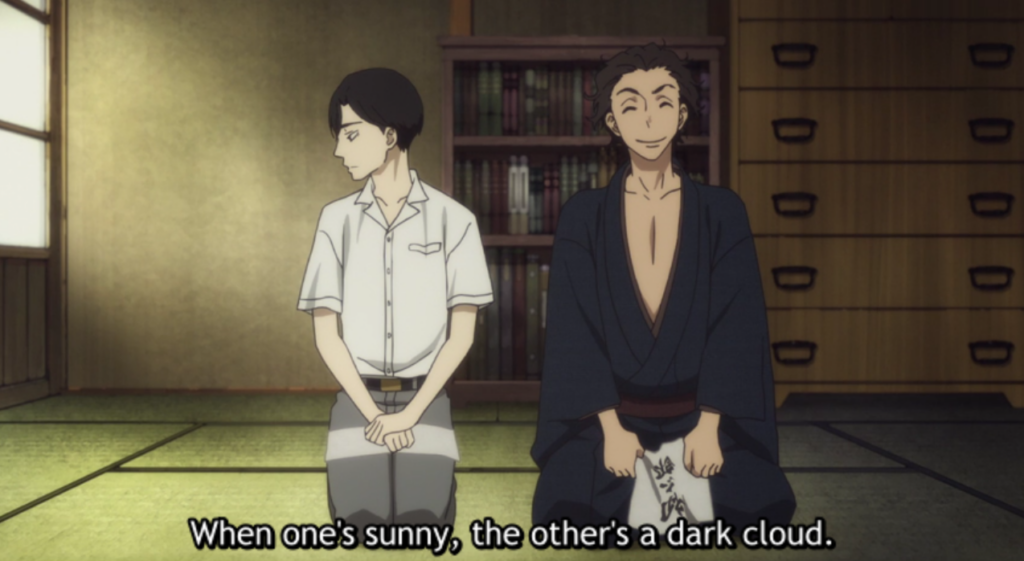
Yakumo is shy and timid, as well as somewhat rigid, while Sukeroku is charming, extroverted and careless. Sukeroku is the one with immediate talent and a great passion for rakugo, while Yakumo has to struggle to achieve success as a rakugo artist. But when he starts loving rakugo, it’s for life. His strong feelings of jealousy and sometimes hatred towards Sukeroku are mixed with feelings of love, and a joy that only Sukeroku seems to be able to evoke within him. When they’re both about to reach a bit of fame, the geisha Miyokichi enters the story. She falls head over heels in love with Yakumo, and reluctantly he starts seeing her. But when their relationship for various reasons is broken off, she runs away with Sukeroku, pregnant with Konatsu. A few years pass. Despite having told himself that he’s better off alone, Yakumo finally decides to go after Sukeroku. But this event, meant to bring Sukeroku, Miyokichi and Konatsu back to Tokyo, ends in tragedy, when Miyokichi and Sukeroku fall to their deaths from a balcony.
The Sukeroku again arc shows what happens after Yotaro has learned about the background of Yakumo’s and Konatsu’s misfortune. His good-humored presence and the relationships formed around him, both with Yakumo and Konatsu, who he marries, become the starting-ground for a healing process. Yakumo finally gets the family he once yearned for… but maybe it’s too late. He’s torn between the past and the present, unable to decide if he wants to live, or if he’d rather pay the price for his actions, by dying and taking rakugo with him to the grave.
The Main Themes
Lover’s Suicide
The japanese term “shinju” means double suicide or lovers’ suicide, and this is a recurring theme throughout the story, as well as a common trope in japanese media (as well as in rakugo). The tragedy that has formed Yakumo’s and Konatsu’s lives resembles a lovers’ suicide. A coping mechanism for Yakumo has then been the thought of committing double suicide with rakugo: taking his own life and letting rakugo die with him.
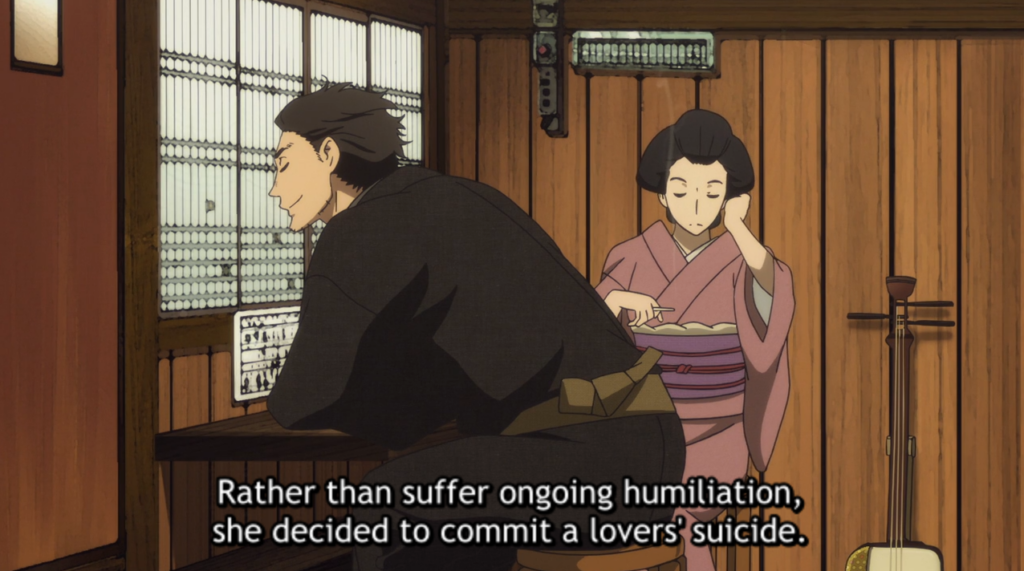
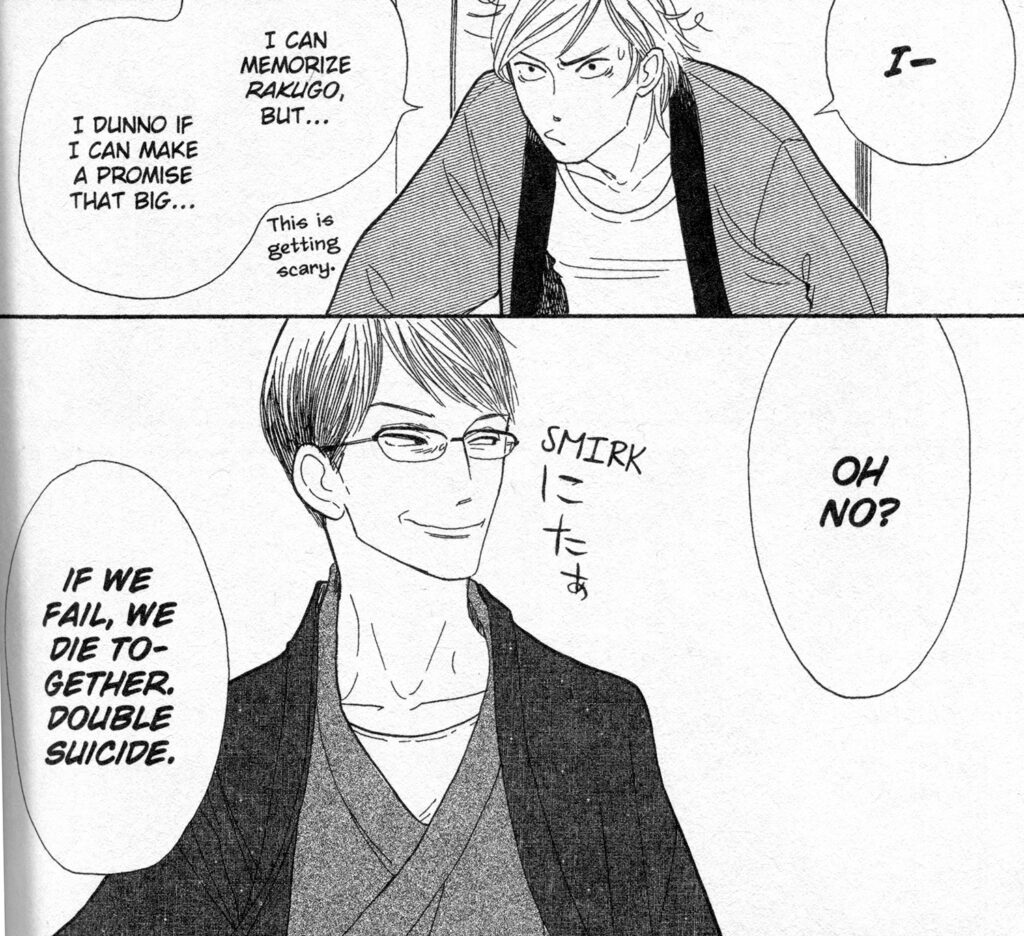
But his commitment towards the people he loves has been standing in his way, stopping him from getting the peace he longs for – as well as from seeing “the God of Performance”. He’s torn between the living: Konatsu, Yotaro and their child Shinnosuke, and the dead: Sukeroku and Miyokichi, as well as the guilt he has to carry as the one who survived.
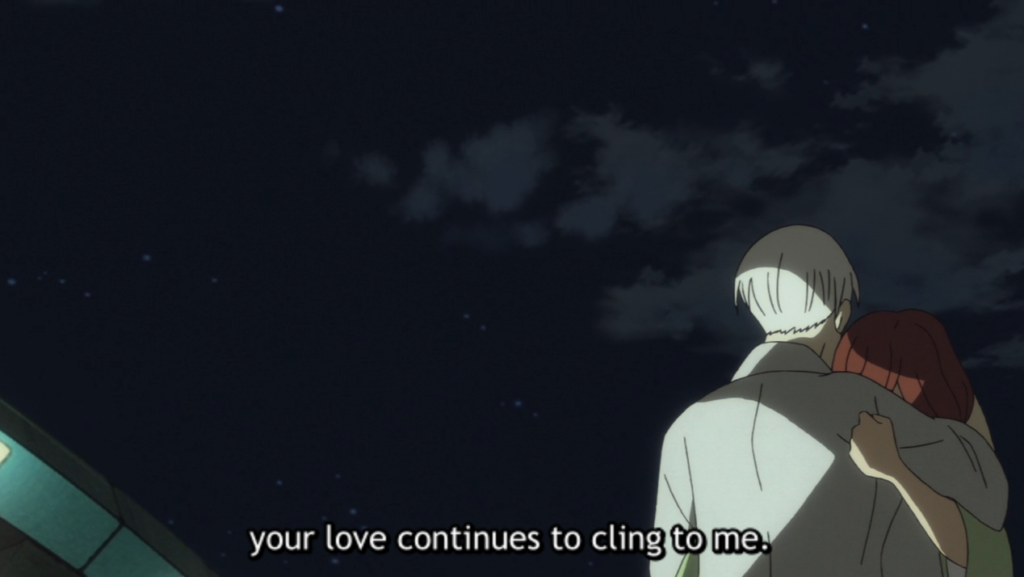
Innovation and Tradition
Another main theme is the tension between the old and new, innovation and tradition. Sukeroku is adding something new och personal to rakugo, while Yakumo’s rakugo is about perfecting, but also conserving, the art form. As he grows older, Yakumo doesn’t see a future for rakugo as it is, but he doesn’t want it to evolve further either. Part of the story is set in a post-war Japan that is developing at a furious pace. Sukeroku is the one who keeps wearing traditional clothes, while Yakumo wears more modern clothes. When Yotaro later comes in as a “stand-in” for Sukeroku, he is the one who helps bridging the gap between the old and new, encouraging Konatsu to perform rakugo even though Yakumo is heavily against it.
Secrets as Information Advantage
The third big theme is the role of having secrets and withholding information. That this is an underlying theme is hinted at at several points in the story. There are also major turning points in the plot connected to this theme – more on that later.
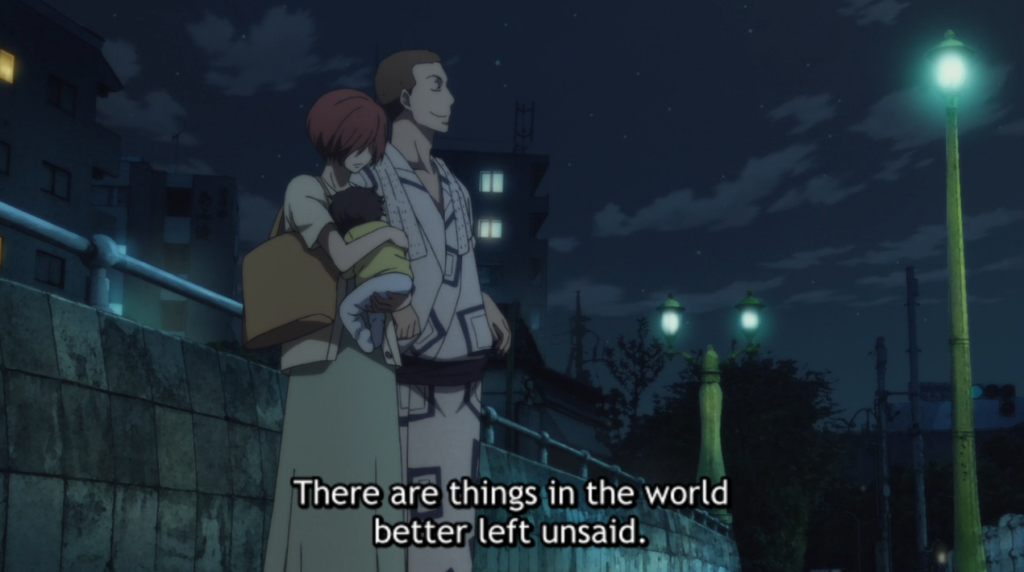
A Complex Love Triangle
Descending Stories is probably one of the most complex love triangles I’ve experienced in fiction, and I think that this is a deliberate choice from the author. The author has chosen to leave many blanks for the readers to fill in for themselves. There is also a lot of sub-text, things that are not explicitly shown or told – instead the reader pieces the puzzle together from many small bits of information. The result is an interpretation that will vary a lot between readers, affecting the entirety of the story.
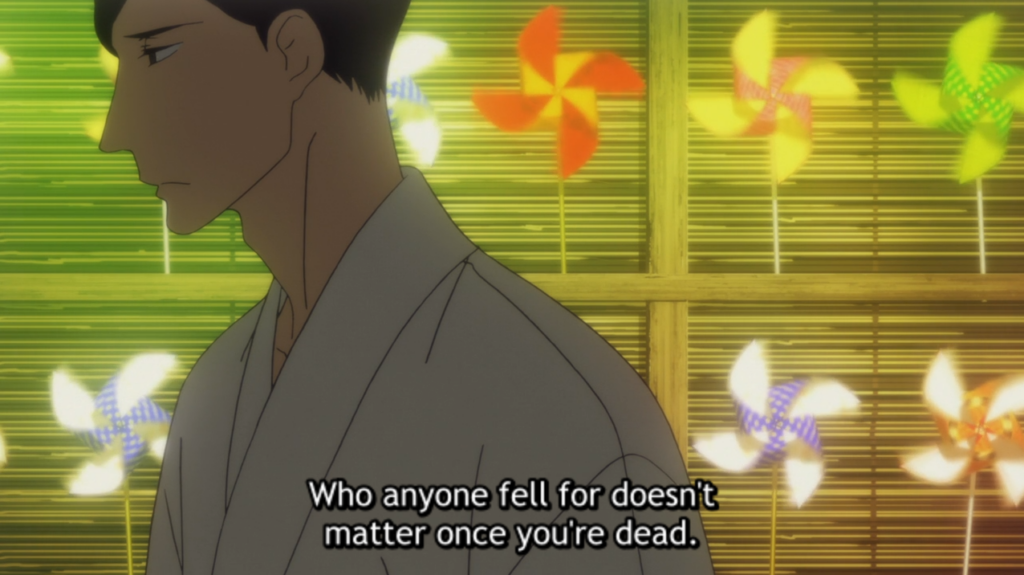
[Spoilers ahead] The love triangle involving Yakumo, Sukeroku and Miyokichi could be seen as a classical love triangle where Miyokichi is at the center, being the object of desire for both Yakumo and Sukeroku. Another way of seeing it is that it’s more complicated, and that the people involved all have different and conflicting desires and wishes.
Yakumo has a very close connection to Sukeroku. Sukeroku is the first person that he opens up to, and for a long time he continues to be the only one that can make him smile. But he also envies him to the point of hatred.
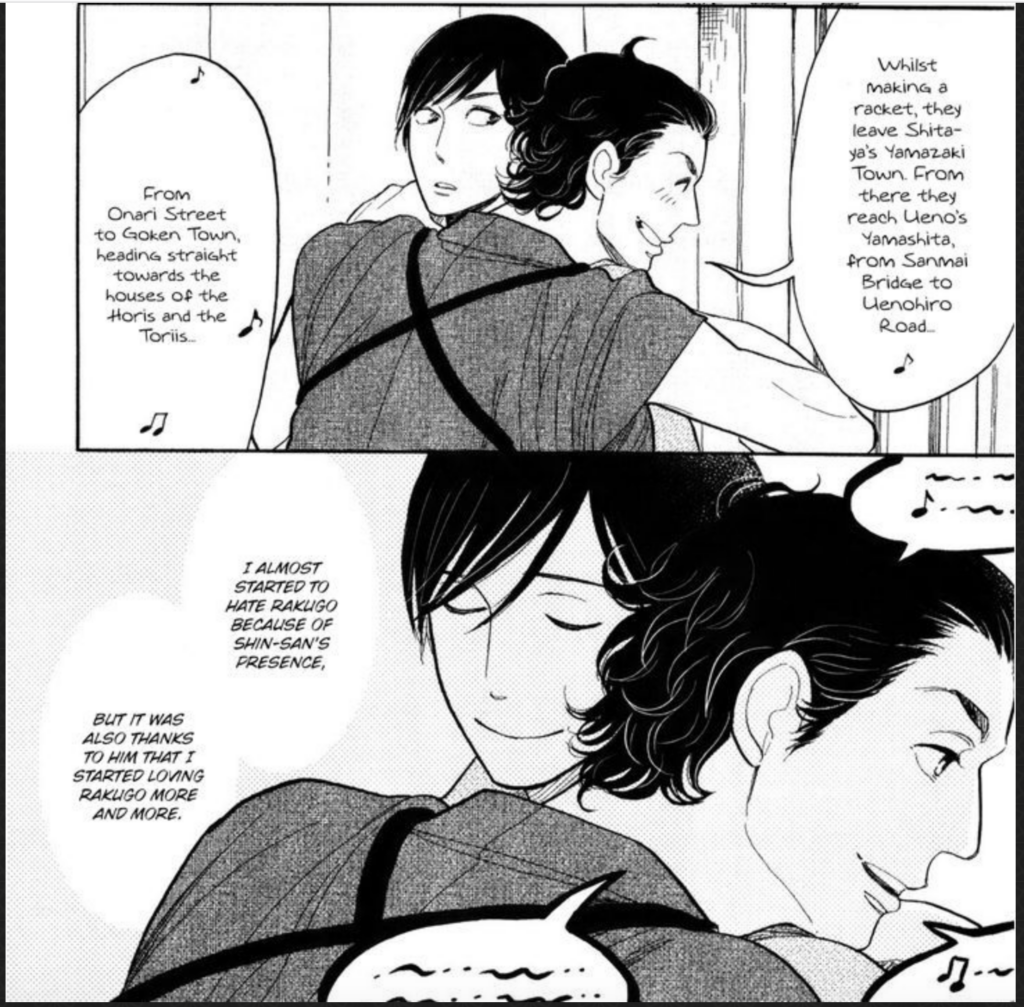
Reading Yakumo’s body language, he is physically close to Sukeroku in a way that is never mirrored in how he’s acting towards Miyokichi (and is only similar to how he’s acting towards Yotaro later on in the story). But that doesn’t mean that he can’t have feelings for Miyokichi too.
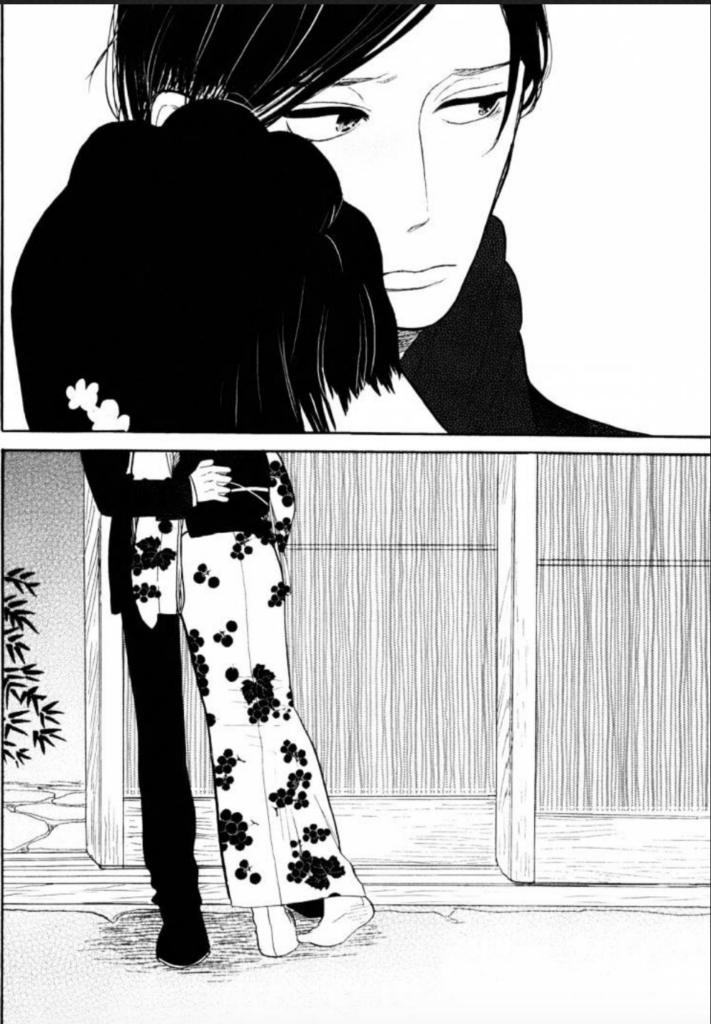
Sukeroku seems not as conflicted. He loves and covets Miyokichi, and views Yakumo as a close friend, a brother. Sukeroku is prepared to do for Miyokichi what Yakumo is not: choosing to live with her regardless of the cost, leaving everything else behind.
Miyokichi partly chooses to elope with Sukeroku to get back at Yakumo for breaking up with her, but in reality she has more in common with Sukeroku than with Yakumo, and I believe she has a more honest conversation with him. But even after they’ve run away, she keeps yearning for Yakumo. His resistance encourages her, and she never stops hoping that he’ll change his mind. After their breakup, Miyokichi puts her love for Yakumo on a piedestal, not wanting to let him go.
Queer sub-text
There are many scenes I inperpret as having a queer sub-text, or where I believe Yakumo is being queer coded, but his sexual orientation remains a mystery throughout the story. It’s up to the readers themselves to decide what they think. Considering the context of the story and Yakumo’s possibilities, being more or less dependent on Yakumo the 7th and on the rakugo world, I don’t think it would be a strange decision to keep one’s sexuality a secret, if it were to differ from the norm.
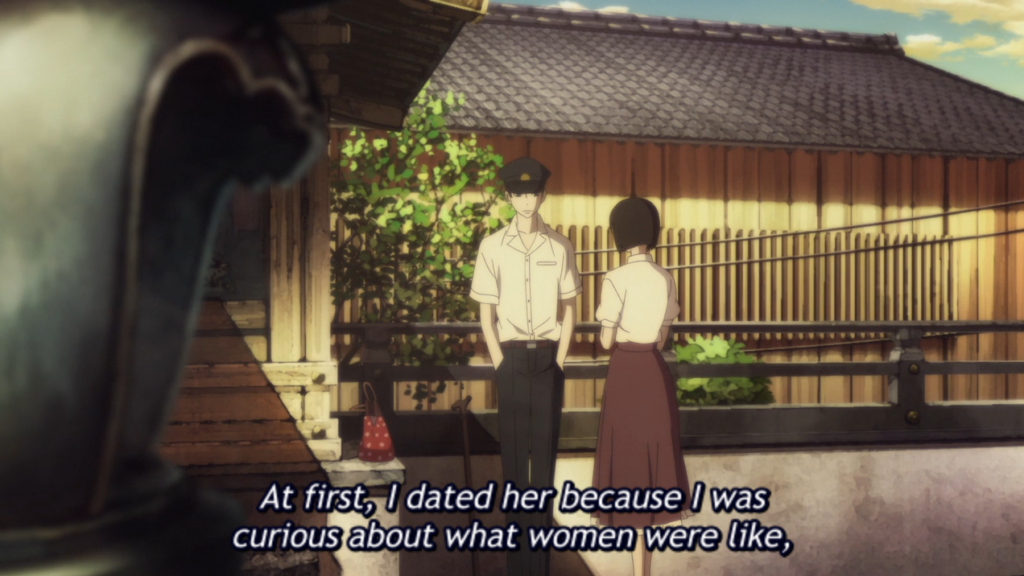
If Yakumo decided early on that homosexuality was not an option, and that he was not going to tell anybody or anything about his eventual desires, that was a promise he would keep all throughout his life.
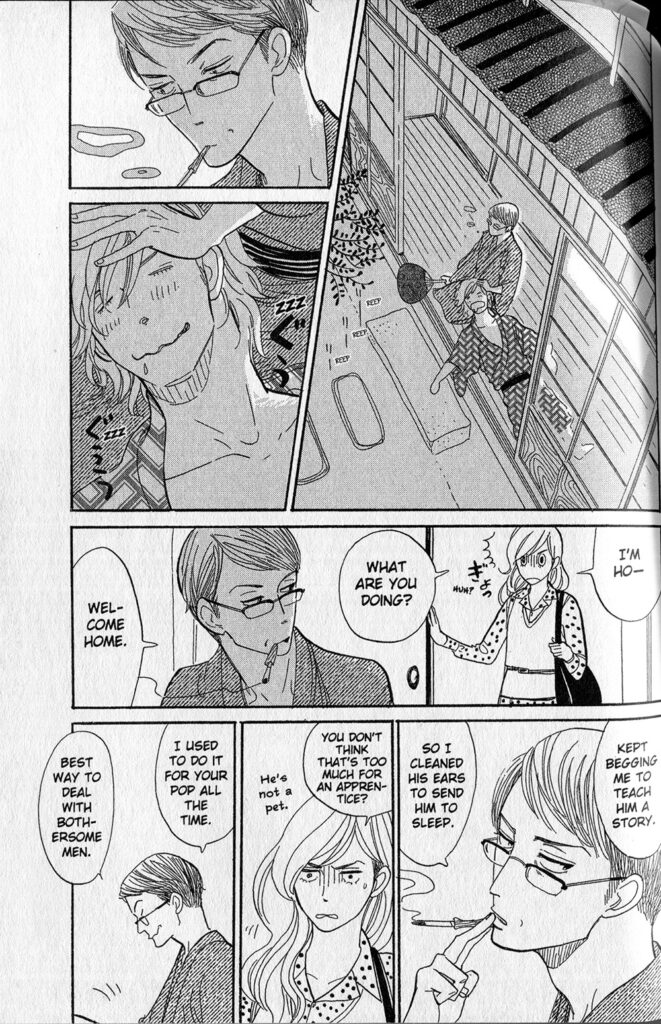
Scenes showing Yakumo choosing to be physically close to Yotaro (in the manga) and to Sukeroku (in the anime) are presented early on, and therefore shape our impression of Yakumo. It’s made with such a delicate touch that it’s easy to miss for those not looking for queer sub-text, since it’s made up of a combination of inner monologue, body language and a certain amount of queer coding (such as presenting Yakumo as effeminate).
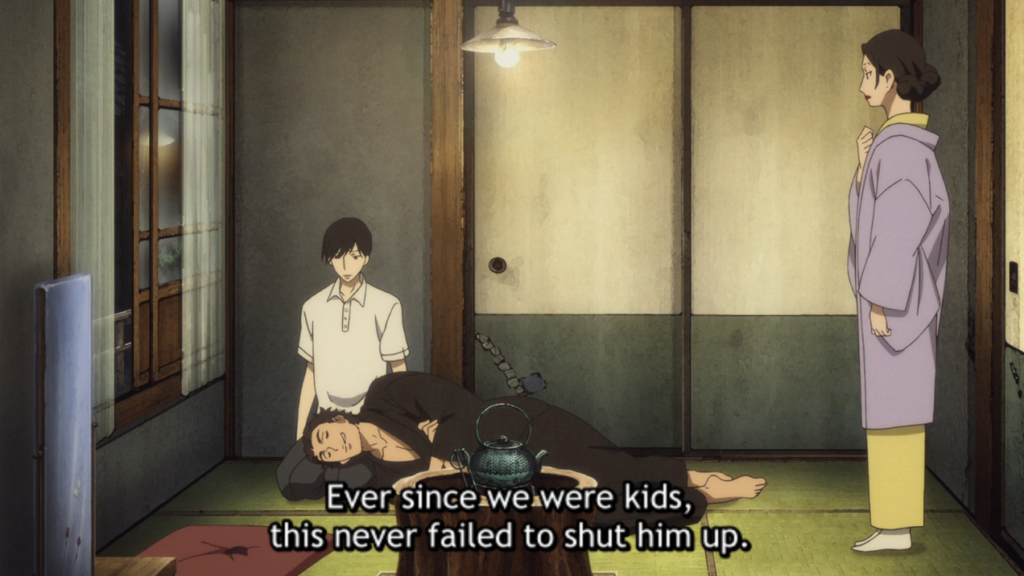
The Relationship with Miyokichi
So where does that leave Yakumo and Miyokichi? Their relationship is complex and sometimes hard to understand – I’m not sure Yakumo himself is entirely sure of what he wants from it. On the night of their breakup, Yakumo tells Sukeroku that he loves her, and is only breaking off their relationship because Yakumo the 7th isn’t approving of it. This contradicts almost every action he has taken up until that point. Yakumo has generally been reluctant towards Miyokichi, backing off as she makes advances – but maybe his feelings towards her changes as he gets to know her better. Miyokichi at least sees him, she even loves and cares for him, and she gradually persuades him to get closer. But in the end, Yakumo isn’t prepared to fight for his relationship with her; he’s not prepared to give anything up for her. He chooses rakugo.
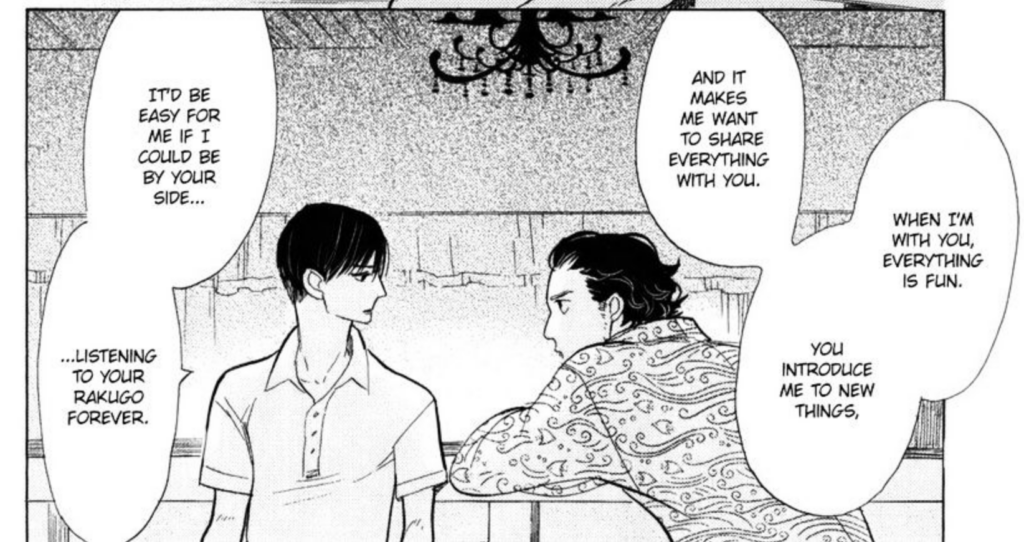
The breakup with Miyokichi also results in a breakup with Sukeroku as he tells him to move out. Yakumo decides that it’s better to be alone – that’s what he thinks he’s best suited for. And so Sukeroku and Miyokichi end up together.
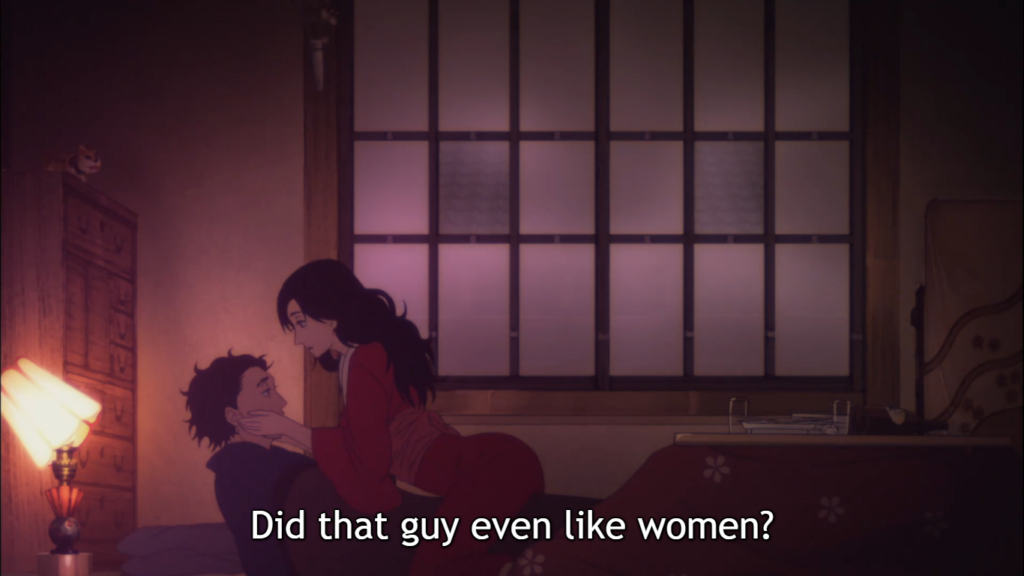
The Reunion
As time passes, Yakumo understands that rakugo alone will not suffice. He decides to go after Sukeroku. He harbours feelings of guilt towards Miyokichi, and bringing her back with them is something he can tolerate, because Sukeroku loves her. He’s prepared to take a step back, regardless of what his own desires might be, for the sake of having his loved ones around.
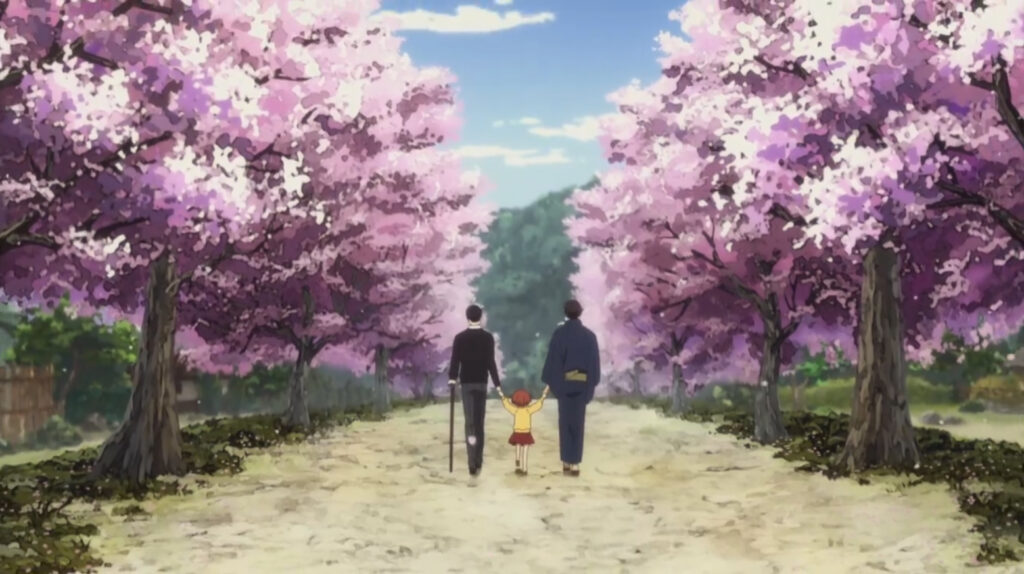
During the short time he spends with Sukeroku and Konatsu in Miyokichi’s hometown, it becomes clear that Yakumo wants them all to live together as a family back in Tokyo. In his mind, this would be a way to resolve the conflicts and heal their relationships.
The Ghosts of Miyokichi and Sukeroku
After the tragedy, the ghosts och Sukeroku and Miyokichi become Yakumo’s companions. He is haunted by both their ghosts, and they are mainly malevolent. The ghost scenes are filled with complex, mixed-up emotions of love, hatred, guilt, and the desire to be forgiven.
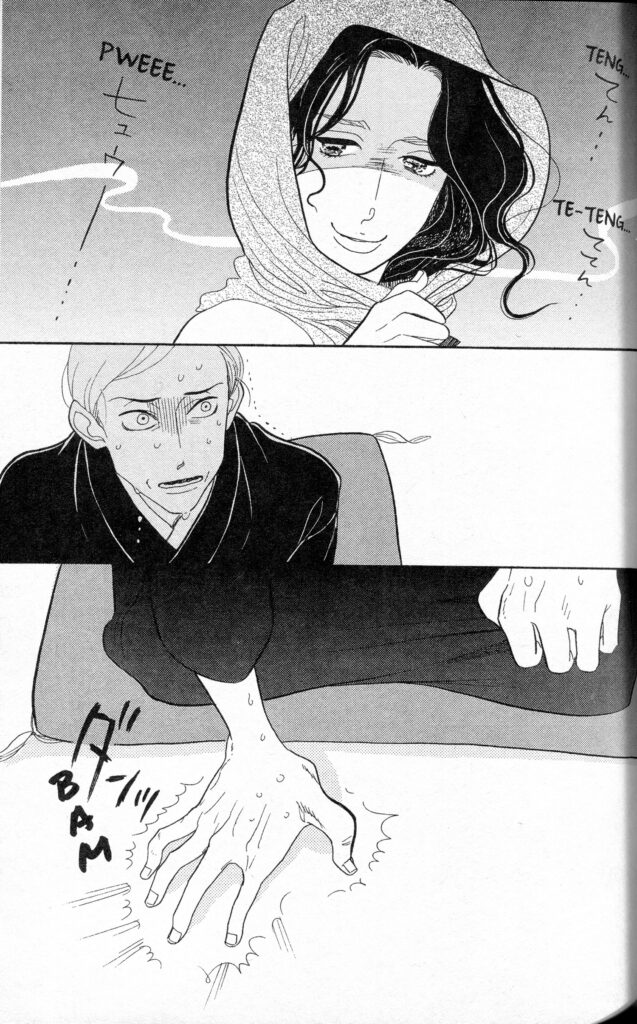
Yakumo believes that his emotions can only be reconciled through his own death, but the living are keeping him from leaving this world, and almost against his own will, some of his wounds are healed through those relationships.
The Ending ‘Revelation’ – Story as a Construction
[Major spoilers ahead] So, does it matter what feelings and desires Yakumo actually had towards Sukeroku and/or Miyokichi? Well, apart from affecting what the reader thinks about Yakumo’s life choices, it also does affect the turning point in the end of the story: The journalist/biographer Higuchi proposes in a conversation with Konatsu that Yakumo might be the biological father of her child, Shinnosuke, who she’s raised together with Yotaro. It’s an absurd suggestion, and it’s rather easy to dismiss – everything that has happened up until that point speaks against it – but depending on how the reader has interpreted Yakumo, the proposition will sound more or less believable.
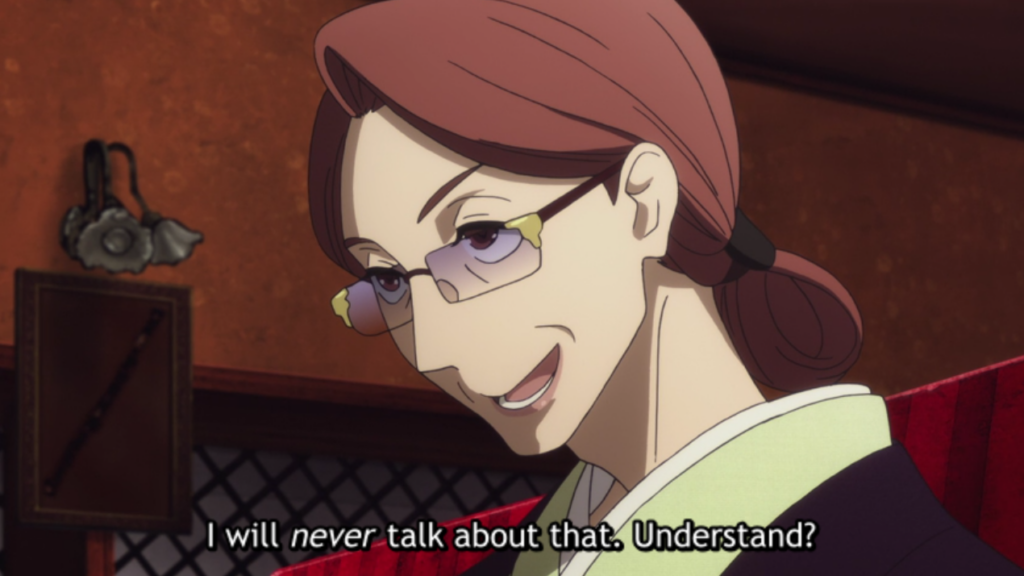
As a revelation made in the last episode/chapter, it’s easy to think that it’s there because it’s true. It’s rather uncommon for a story to propose something to the reader that isn’t. We are used to stories presenting us with “what really happened”, and when a revelation comes in the end, it usually means that it’s the truth. In Descending Stories, it’s not that easy. One premise in this story is that it’s hard to know what the actual truth is, that the truth varies depending on who’s telling the story, and that people have their secrets.
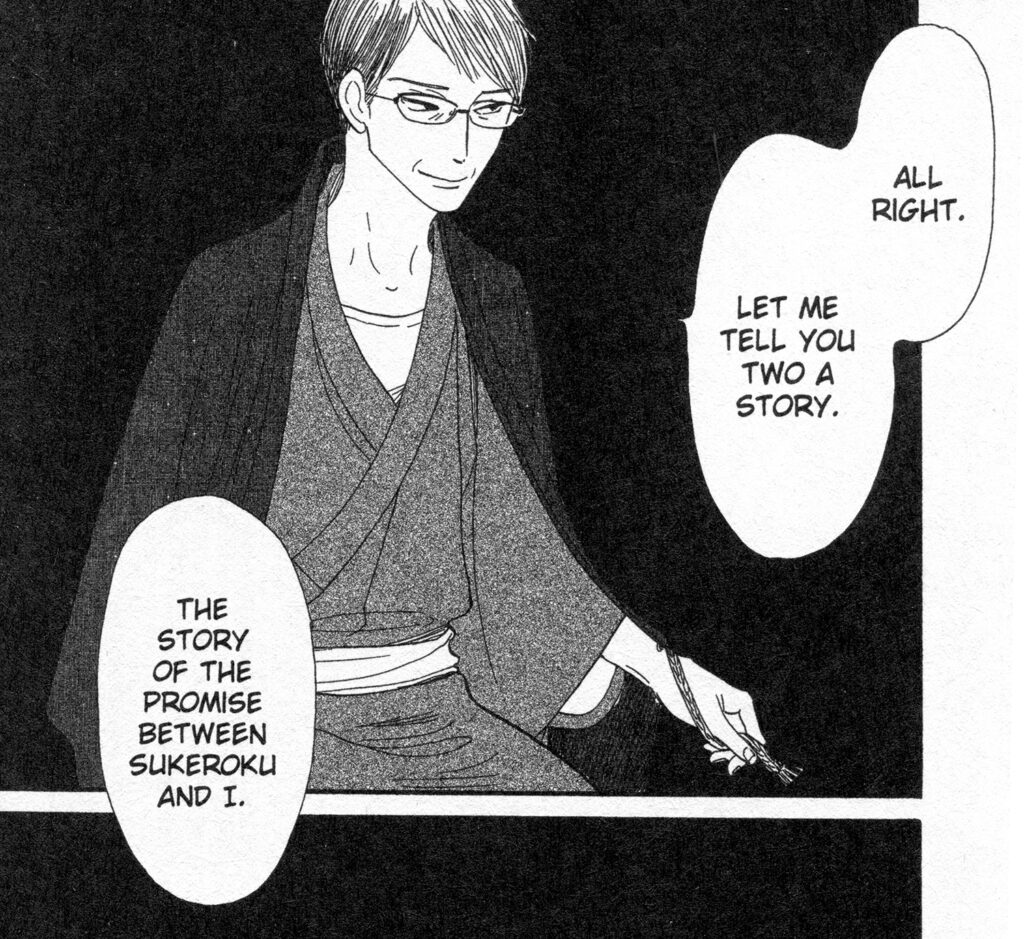
But in a way, the ending revelation can also be seen as putting the readers to a test: In what way did they follow the story? What assumptions did they make about Yakumo, Konatsu, and Yotaro? Did they pay attention to the interactions between, say, Konatsu and the Yakuza boss’ son? In this part of the story, I think the construction shines through a little too much. The ending revelation tempts the reader to think back on what has happened before, making the story come through as a construction with clues placed here and there. That is fine when it comes to e.g. a detective story, but in a drama it can take away from the experience.
On the other hand, I love a story that has me thinking, and this one really did. I had to form my own opinion from the bits and pieces I was given, and while doing so, I found that many people had interpreted the story very differently from me.
Implicit Storytelling and Interactive Storytelling
That also made me think that this kind of implicit storytelling has things in common with interactive storytelling. In a story based game, the player also gets to piece the story together from small bits of information. Those may vary from player to player, in a way that is not corresponding to that of a more linear story, but the ‘putting together information from story pieces’ part is the same. Most stories are told in a manner that prevents readers from making misinterpretations, but in an implicitly told story, the opportunity for readers to make different interpretations is a deliberate choice. In the same way, the interactive story is constructed to be pieced together differently each time the game is played. The opportunity for different interpretations is what’s common between the two.
Is it okay for fictional characters to keep their secrets?
We all want to know “what really happened” – and I think that one of the gifts that stories (just as well as games) can bring us, is temporary order in a complex world. Stories bring relief to a world consisting of things we can’t fully comprehend. But stories can also ask us questions, such as those I’ve been working on in this post. I admire the way the author Kumota Haruko has let the characters own their stories, and decide how much they want to tell each other, as well as the reader.
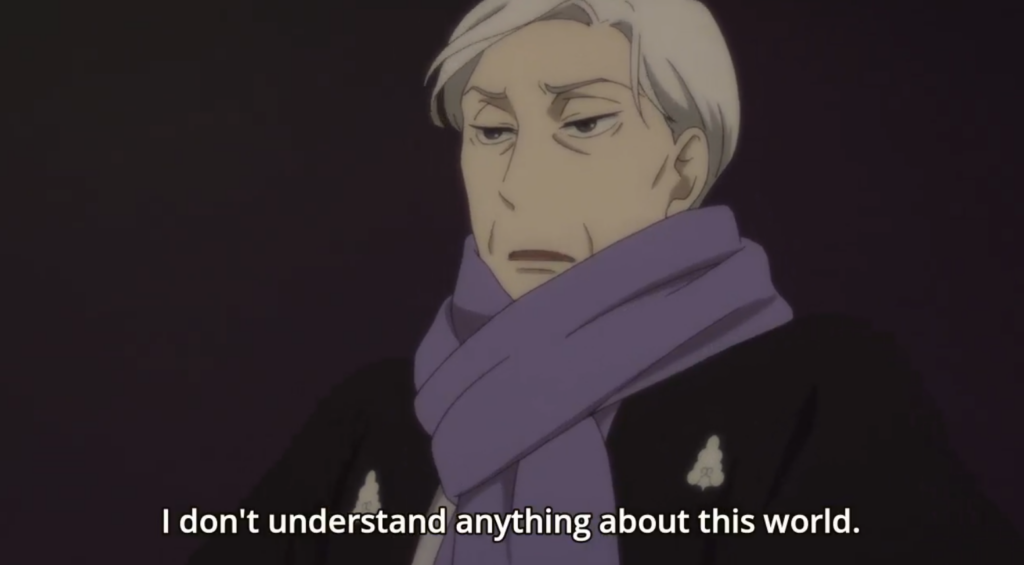
Descending Stories shows us that relationships are multi-faceted and not always easily pinned down. That is also the essence of queerness: not being able to tell exactly what anyone or anything is, letting identities and relationships remain fluid and changeable. The fact that the story is not explicitly queer doesn’t make it less valid as a queer experience, if that’s what you choose it to be. This also shows us that implicit storytelling has a value of its own: it gives us the opportunity to make our own decisions and interpretations. And lastly: Characters in stories don’t owe us anything – they’re allowed to keep their secrets.
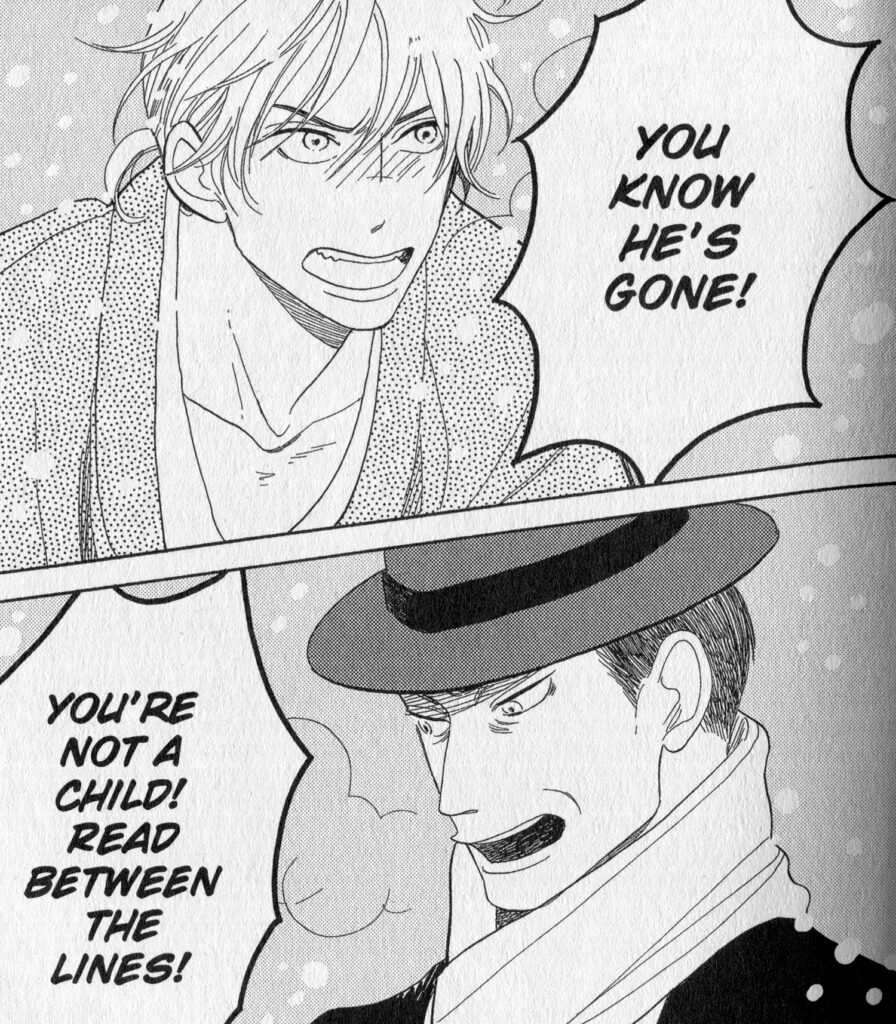
What “the truth” is, is something that is up for discussion in this work, and it presents us with the idea that having secrets can be a way to keep some control over your own life – your own story.
